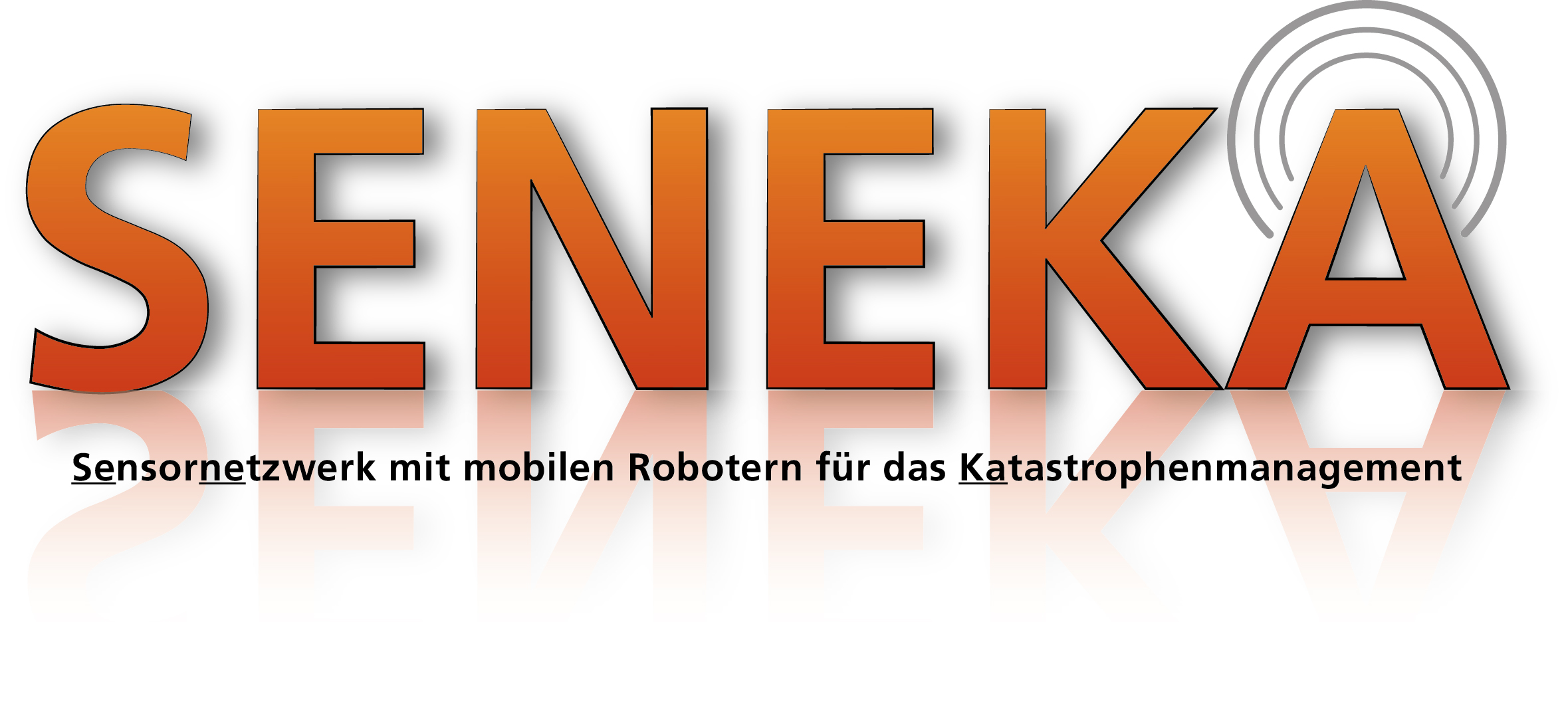Short description of the project
The SENEKA project idea aims to provide task forces and rescue teams with sensors and robots capable of forming dynamic networks, thereby significantly reducing the time required for the most important phases of disaster management when it comes to saving lives: reconnaissance of the disaster area and the search for victims and sources of danger.
The typical ad-hoc nature of natural disasters (earthquakes, tsunamis etc.), terrorist attacks and large-scale industrial accidents (e.g. in nuclear power plants) makes rapid, extensive, situation-specific reconnaissance and detection of victims and sources of danger essential for saving lives.
Mobile aerial and terrestrial robots (UAV, UGV) with a wireless communication capability autonomously and semi-autonomously carry various function-specific sensors for reconnaissance tasks along planned collision-free movement trajectories through the terrain, and they directly position them in critical locations.
Project goals
Networked mobile aerial and terrestrial robots support task forces as they search for disaster victims.
The SENEKA concept is particularly quick and efficient when it comes to exploring an unknown devastated area as the various sensors and robots distributed throughout the area are capable of networking with one another based on the situation (swarming), thereby enabling them to cooperatively complete complex reconnaissance and search missions. The parallel processing of subtasks and utilization of synergy effects (e.g. by combining short and long-range reconnaissance) makes it possible to search for victims and sources of danger in a much more situation-specific, rapid and strategic manner.
Project result
The SENEKA concept is already being tested in a staged disaster scenario.
The functionality and effectiveness of the SENEKA concept and prototype components are being tested and demonstrated for public presentation in a realistic, staged disaster scenario on a testing ground provided for the consortium by the THW (German Federal Agency for Technical Relief) with the involvement of end users, who provide input (THW, Mannheim Fire Brigade, Berlin Fire Brigade).
The SENEKA project aims to substantially contribute to overcoming the hurdles between research and practical application of these technologies in disaster situations with innovative possibilities in the field of information, sensor and robot technology in the future. The specific competencies complementing each other perfectly as well as the long-standing experience of the participating Fraunhofer institutes IOSB, IAIS, IIS, IPM and IPA offer an ideal framework for realizing the ambitious goals of SENEKA.
Target-oriented, strategic investments made in advance have created an infrastructure (various UAV, UGV, mobile control room, s-net components, 2-D/3-D cameras, LIDAR, navigation and hazardous substance sensors) for the applicants that will greatly contribute to the success of the SENEKA project. The consortium therefore has a basis, which is unparalleled in the German research scene, for the ambitious project in planning.
 Fraunhofer Institute of Optronics, System Technologies and Image Exploitation IOSB
Fraunhofer Institute of Optronics, System Technologies and Image Exploitation IOSB 